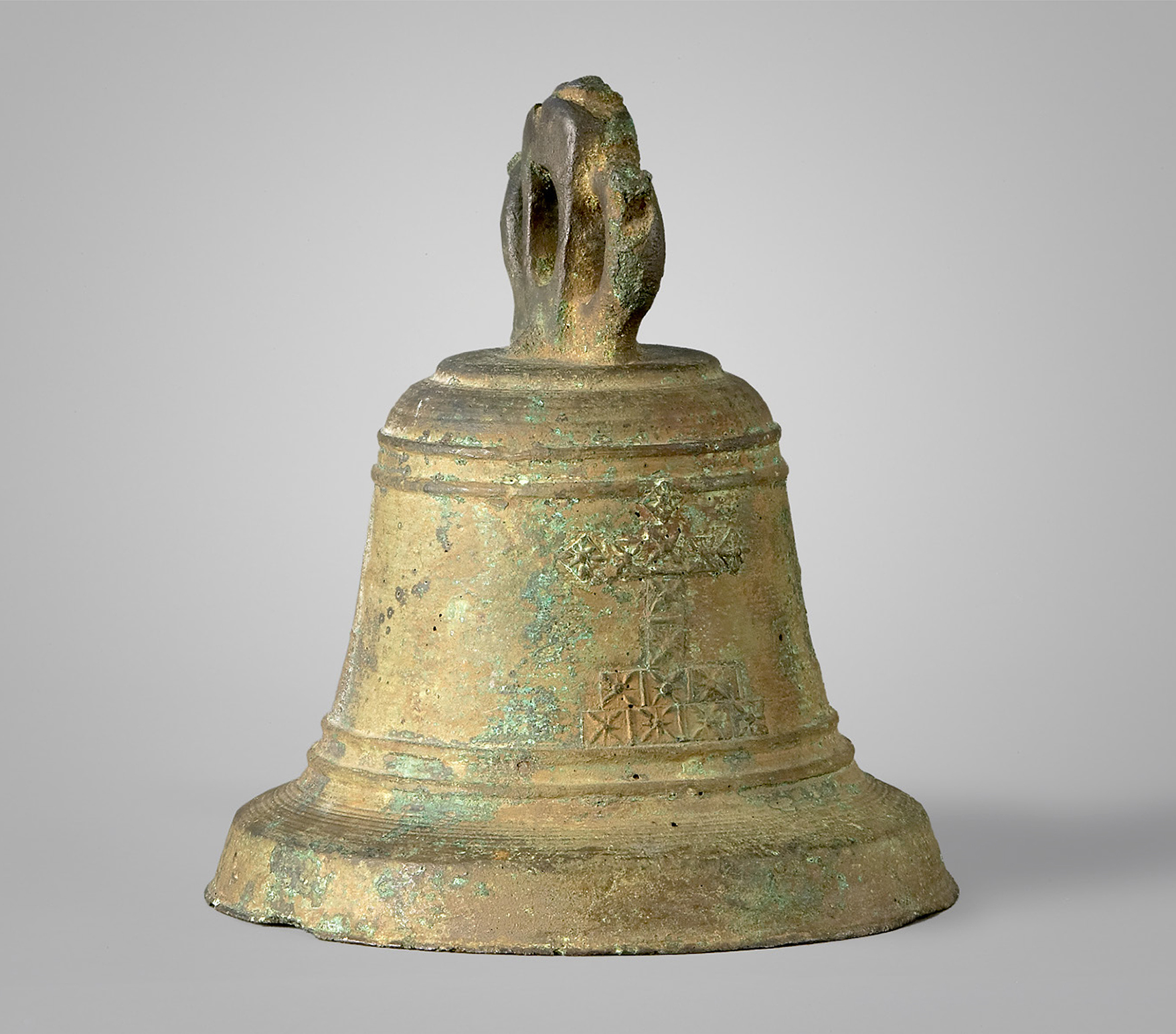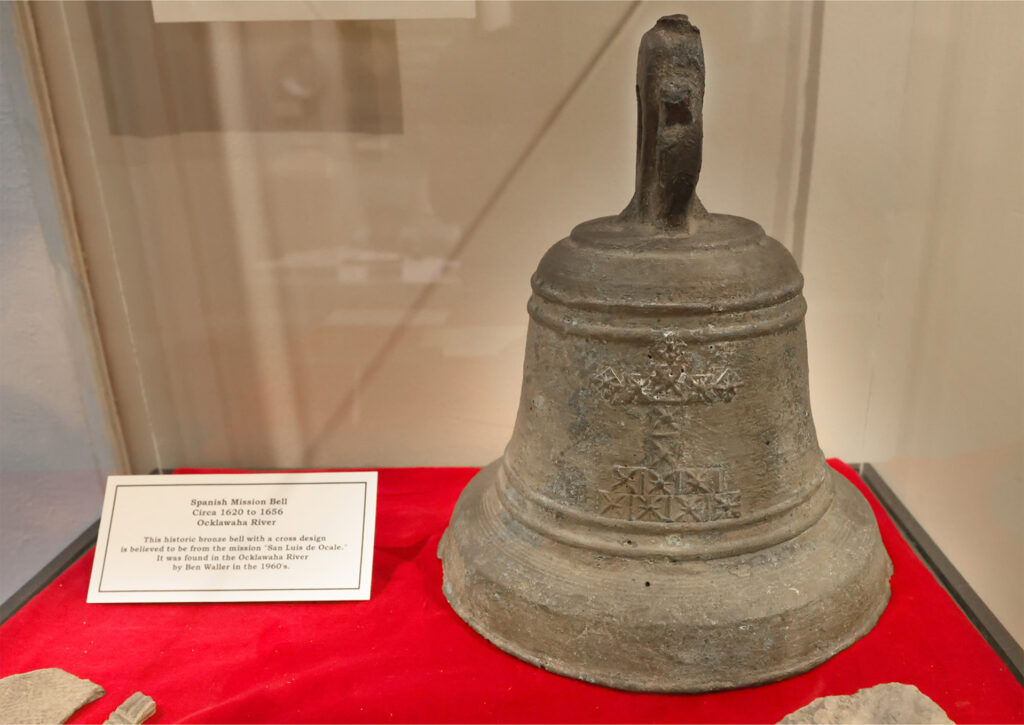
The Ocklawaha River runs like a curvy dark ribbon through Marion County and eventually flows into the St. Johns River near Palatka. The river has provided food, fresh water and transportation to people for thousands of years. Its waters occasionally give up objects that serve as clues about past cultures and some of these unique finds are on display at the Silver River Museum & Environmental Education Center in northeast Ocala. Among these is an old bronze bell.
The bell was recovered from the river bottom in the 1960s by Ben Waller, a local diver, self-taught archaeologist and paleontologist. Waller was prolific in his research and contributed much to our knowledge of ancient Florida. Waller even has a fossil species of bird named after him. The very first fossils for the ancient carnivorous land bird titanis walleri were found by Waller and Robert Allen in the Santa Fe River.
Another local diver, Billy Franklin, was with Waller the day he found the bell. The two men were diving when Waller surfaced with what he thought was an old ship’s bell. When they returned to Waller’s house and inspected it more closely, they found a cross prominently embossed on it and knew it was a special find. The bell was clearly very old and religious in nature.
Waller worked closely with Guy Marwick, who established the Silver River Museum in 1991. The bell was among several notable objects in Waller’s collection that were loaned to the museum for display in 1992. Months later, Waller passed away and several of the loaned items (the bell included) were purchased from his estate so they could remain on exhibit indefinitely.
Historic research later revealed the bell came from a lost Spanish mission situated along the Ocklawaha River during the 1600s. It was indeed a rare find.
The Spanish explorers and priests who settled in Florida kept meticulous records. The original documents are now housed in archives in Seville, Spain and Cuba, and describe the missions in great detail.
Records describe dozens of Spanish missions across what is now north Florida. Three Franciscan missions were found at prominent Timucuan Indian villages in what is now Marion County between 1609 and 1656. These missions were established with the goals of converting locals to Catholicism and generating support for the Spanish colonial presence in the form of food (mainly corn) and people pressed into labor.

A typical Spanish mission included a village, church, priest’s house, Native American council house and sometimes a small contingent of Spanish soldiers for protection. Bronze church bells would have called parishioners to daily Mass and marked special events. The bells were special religious objects that would have been coveted by the friars.
By the end of the 1600s, people living in and near mission complexes fell under increasing pressure from disease epidemics and attacks from other Native Americans allied with the British to the north. By 1706, the mission towns in north Florida had been mostly abandoned and the system was in collapse.
The location where the bell was recovered is a match for the site of mission San Luis de Eloquale, which operated from about 1620 to 1656. The mission was closed after a violent Timucuan uprising in 1656, when Spanish officials demanded high ranking Timucuan leaders come to St. Augustine to work as laborers. This was the final straw that caused an armed rebellion during which numerous people were killed. The uprising was crushed by Spanish soldiers and several missions, including San Luis de Eloquale, were closed as a result.
How the bell ended up in the river is a mystery. The fact the mission was abandoned during violent times means it could have been thrown into the water intentionally, perhaps by angry parishioners, or maybe by a priest trying to protect it from desecration.
Mission bells were rarely, if ever, left behind and ours is one of the special objects in the museum collections and is on permanent exhibit. There are no other complete Spanish mission bells from this time period in museum collections that we know of. The bell is indeed a unique find and one can only imagine the stories it could tell. OS
Scott Mitchell is a field archaeologist, scientific illustrator and director of the Silver River Museum & Environmental Education Center at 1445 NE 58th Avenue, inside the Silver River State Park. Museum hours are 10am to 4pm Saturday and Sunday. Admission to the state park is $2 per person; free for ages 6 and younger. To learn more, go to silverrivermuseum.com






